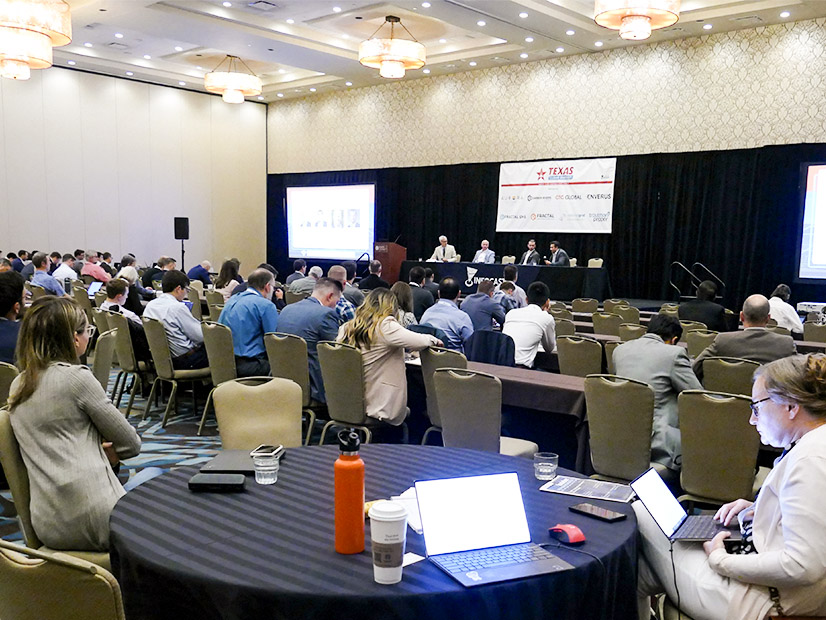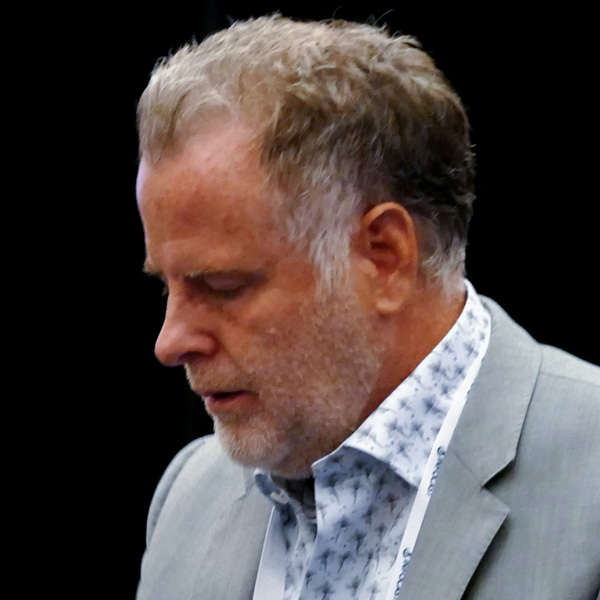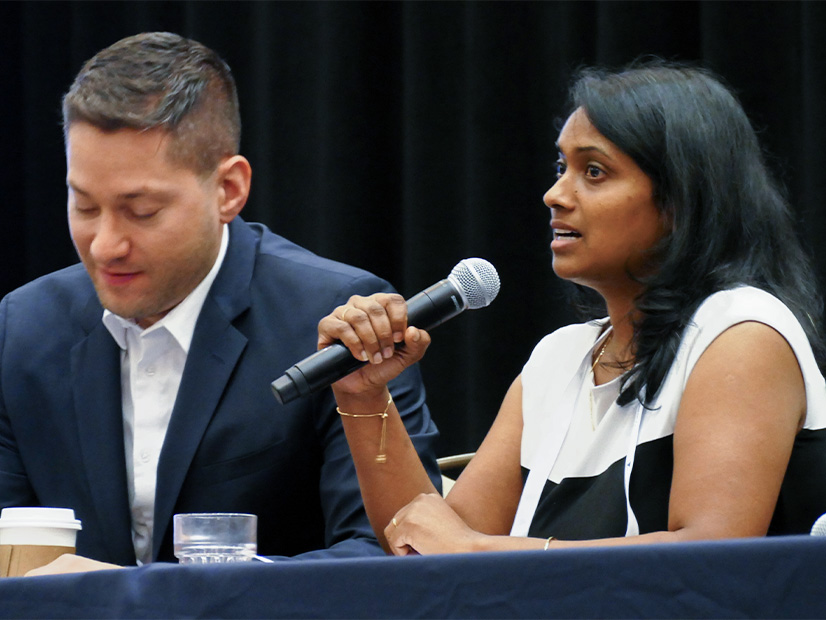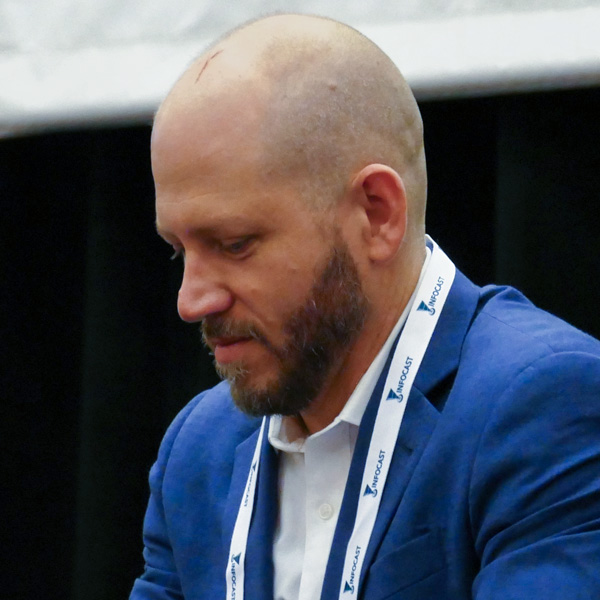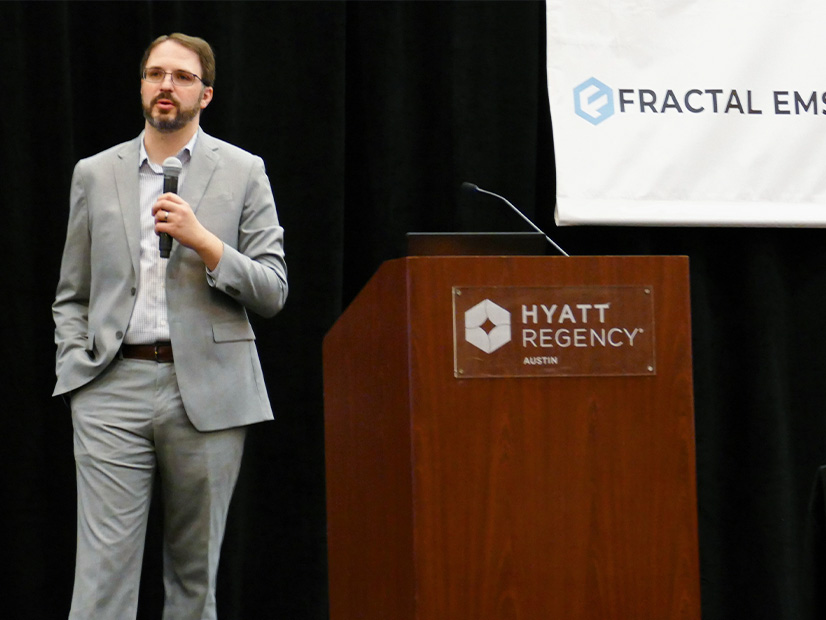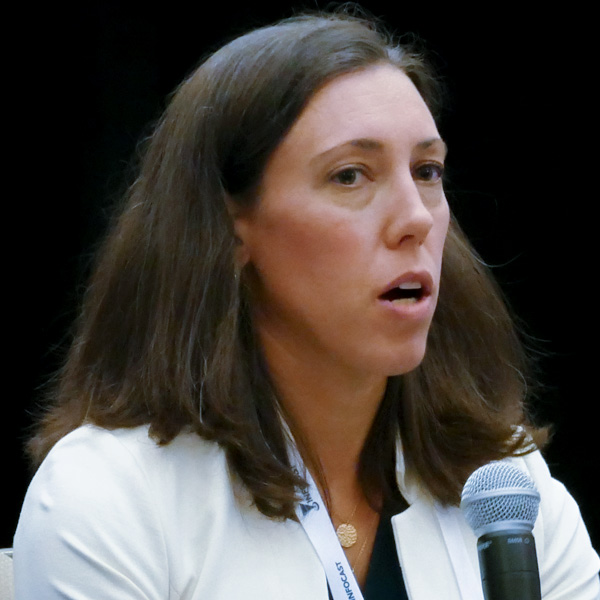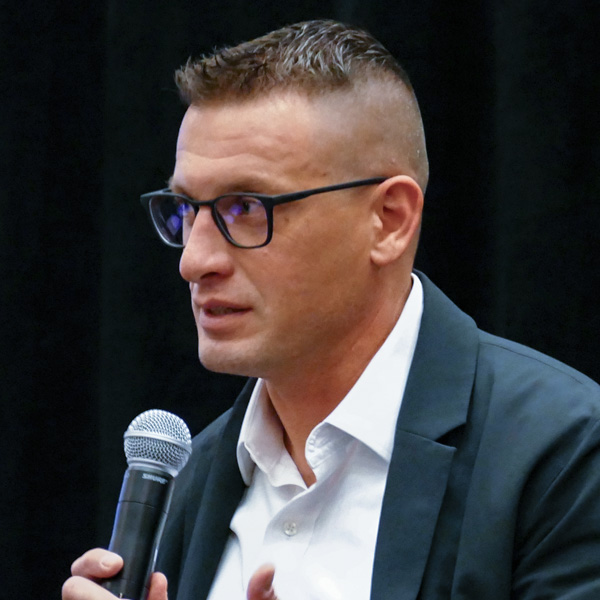AUSTIN, Texas — The Infocast Texas Clean Energy Summit attracted several hundred developers, asset owners, financiers, investors and ERCOT stakeholders to discuss the booming opportunities and looming challenges in today’s renewables environment.
Speakers and panels discussed large flexible loads, crypto mining, energy storage, Texas’ continued reliance on renewable energy and the challenges facing ERCOT from the state’s tremendous growth and insatiable demand for energy. Many of those solutions will be affected by the new laws and rules passed by the recent Texas Legislature.
Part of a panel addressing the new legislation, Mark Stover, director of state affairs for Apex Clean Energy, pointed to a projected slide that included images of a couple of news clippings.
“Clean energy escapes the legislative session,” he said, referring to one of the headlines mentioned. “That’s fairly accurate. Did we lose any limbs? We did not.
“I think there were about 50 bills that impacted our industry, but there were 19 bills that did not get across the finish line. Some were killed on the floor, some never got on a hearing, others kind of just got lost in the shuffle. But there were 19 bills that would have directly harmed the clean energy industry. Fortunately, those went away.”
One of the bills that failed (Senate Bill 624) would have required wind and solar facilities to acquire special permits from the PUC, a requirement thermal generators wouldn’t face.
“That was an industry killer that would have been absolutely devastating for the clean energy industry,” Stover said. “Fortunately, we were able to get the recession and ensure that that bill did not pass, no trouble.”
Still up in the air is the shape of the future ERCOT market. The grid operator and the state’s regulators still are pushing forward with the performance credit mechanism (PCM), a market tool that would retroactively reward dispatchable generation that meets performance criteria during the tightest grid periods with incentive payments.
Staff plans to draft a strawman proposal incorporating the Public Utility Commission’s feedback and hold a series of workshops with stakeholders and PUC staff. ERCOT and the market monitor will perform a cost-benefit analysis before the legislature next meets in 2025. The ISO expects it will take another two years to implement the PCM.
“So where do we go from here? There’s a lot of details to be worked out,” said Nate Miller, a director with Energy and Environmental Economics (E3). (The firm studied several market designs for the PUC but did not recommend the PCM.)
He said a reliability standard first must be determined, as it will set the PCM’s performance credits awarded to generators. Then comes the question of dispatch requirements, hybrid resources only being part of the equation.
“There’s a lot of details in the PCM that could significantly weigh the impact of PCM on the market,” said Resmi Surendran, vice president of regulatory policy for Shell Energy North America. “The PCM, based on some studies, could have been a one-third reduction in the energy price, which is the revenue stream for renewables. Hopefully, it can be implemented as an additional revenue stream … without reducing the revenue stream for everyone else.”
Investors Cautious After New Laws
While the renewable sector may have escaped more severe legislation this year, it may have been enough to scare off some potential investors.
“Investors saw what happened in that last Texas session and are sort of unsure about what’s going to happen in the next session for understandable reasons,” said Frank Swigonski, director of market design for Pine Gate Renewables. “I’ve heard people say that there’s always been anti-renewable sentiment in Texas and this was just another day at the office. The difference last session was it was a little bit more pronounced and it got a little bit more national attention. I think that’s something that we’re going to be dealing with as we’re trying to get investment projects long term.”
Swigonski said the PCM remains the biggest question mark with how costs will be allocated and its effect on the energy market.
“That uncertainty itself is a challenge because other developers can probably feel the same way and we can execute around new interconnections, cost allowances and new firming requirements, as long as we know what those requirements are,” he said. “But as long as there’s a big question mark in your financial spreadsheet, it’s really hard to close on them right.”
That said, Swigonski still says the Texas energy market is a great place to invest.
“The interconnection process in Texas is the fastest, the easiest and cheapest anywhere in the country. None of that changed,” he said.” Texas is a big state. It’s got a dynamic, dynamic economy, and there’s a lot of sunshine and wind.”
“We’re pretty invested in Texas, and we think that the policy risk is very manageable,” said Allan Schurr, chief commercial officer of storage developer Enchanted Rock. “I can tell you that having lived a former life in California that it is a wild card. Texas is a lot more predictable. It’s undergoing a lot of changes with the market redesign. I don’t know about the fundamentals but somehow, through the noise and the fog, there’s still opportunity for us.”
Living with Large Flexible Loads
When Bitcoin miners — having been shoved out of China because of their insatiable demand for power — began flocking to Texas in 2021, Gov. Greg Abbott (R) welcomed them in a tweet proclaiming the state “will be the crypto leader.”
Two years later, Bitcoin mining consumes about 2.2 GW of power. That consumption could triple should the additional 4 GW of mining operations approved by ERCOT’s interconnection process become energized. And while the mining loads gobble power, their ability to shut down quickly during tight operations is what makes them appealing to grid operators.
ERCOT has adapted quickly to Bitcoin, data centers and other large, flexible loads (LFLs). It has created a working group dedicated to the loads and hired an LFL interconnection manager, Agee Springer. It also has proposed new LFL classifications as either curtailable load resources or registered curtailable loads; the former would participate in economic dispatch; the latter would operate outside SCED.
“The optimal solution for reliability would be for as many of these loads as possible to participate in the economic dispatch,” Springer said. “What this really does is it allows their behavior to be factored into the economic dispatch and accounted for when generation is instructed on how much power to produce. We see this as kind of a benefit to both loads and to ERCOT. It takes the guesswork out of being price responsive. You feed your desired behavior and your strike prices into the economic dispatch and then your behavior is coordinated with the rest of the grid.”
He said the proposed concepts, which could be ready next year, would provide more data from load resources and improve the accuracy of ERCOT’s forecasts. That would create a bigger pool of ancillary services, Springer said, “so that’s a benefit for everyone.”
The Clean Energy Buyers Association’s Bryn Baker, senior director of market and policy Innovation, stressed the need to be able to run a 21st-century grid that keeps the lights on in 21st-century weather.
“That requires thinking more expansively about what is dispatchable versus non-dispatchable. Certainly, renewables are not always reliable and the dispatchable energy is not always reliable,” she said.
“A big success story, besides demand response, is wind, solar and storage holding up the grid when its groaning at the edges,” Baker added. “It is going to require thinking about things differently. We’re going to need new technologies and new approaches … but most important is that we’re building [an ERCOT] market where that innovation happened, where testing those new technologies and approaches is possible.”
IRA Could Be Boon to Texas
Several panelists marked the one-year anniversary of the Inflation Reduction Act, which provides billions of dollars in incentives, grants and loans to support new investments in clean energy and other areas.
“When you look at it at first blush, you see a lot of positive things that are more long term,” said Matt Pawlowski, vice president of development for NextEra Energy Transmission. “We’ve gone from the years of three to five years [of tax credit deadlines], etc., where you’re kind of rushing into everything because you think it’s going to expire. Now, we have a much longer runway … the IRA has been a longer-term view of things that we’ve wanted for years, instead of three-, four- and five-year chunks.”
George Hardie, vice president of business development for Pattern Energy Group, agreed the IRA will spur new development in Texas.
“It’s a mixed bag of theories and it’s certainly ample ammunition for issues in some of the congested areas in the Texas Panhandle, where there’s more power than can get to some of the load centers,” he said, noting the demand placed on the grid by oil and gas production in the Permian Basin. “We’re seeing astounding load growth … all that oil and gas is being electrified, so there’s going to be a significant amount of renewables and weather, as well solar, needed for that density.”
